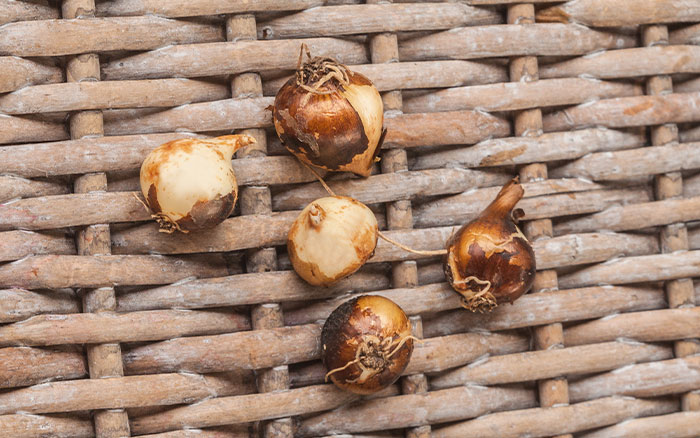Autumn is the best time to plant out camassias, ready for flowers in spring where they bloom on tall, upright stems. Find out how to grow camassias in your garden with this handy guide…
Planting camassias
The tall spires of camassias bloom between April and June,with tall spires of blue, white or pink flowers. Also known as wild hyacinths, Indian hyacinths or camas, they are grown from bulbs. Autumn planting bulbs give them plenty of time to settle in and store energy before bursting to life in spring.
Most bulbs prefer a well-drained soil, but camassias can also grow in heavy, moist soils which makes them a great contender for those spots in your garden where other spring bulbs won’t grow.

Choose a spot in full sun or partial shade, either in the ground in a moist spot or in containers. However, bear in mind that camassias grown in containers will need to be watered regularly when the weather is dry.
Plant by making a hole for the bulb that’s twice the depth of the bulb and position it with the pointed end facing upwards. Use the lightbulb technique to push and twist the bulb into place, then water them in well.
Caring for wild hyacinths

Once planted in place, the bulbs should get sufficient moisture from rain. But, in dry periods over summer it’s ideal to water them. When the foliage has turned yellow and died back, the foliage can be cut back.
When flowering is finished, the blooms can be deadheaded. Alternatively, leave a few flowers on the plants to save the seeds. These seeds can be sown in a seed tray and left to germinate. Once sown, these plants can take around 3 years to flower.
They are hardy, so will flower year after year. But if they stop flowering well and become overcrowded, the clumps can be split in summer, replanting the bulbs further apart.
Types to try
Camassia quamash (camas)
The long narrow leaves are joined by spikes of blue, star-shaped flowers. They are a lovely addition to a wildflower meadow where they grow up to 70cm tall. Contrast cheery yellow bulbs such as daffodils and tulips with these star-shaped blooms.
- Flowers in spring
- Hardy through most of the UK
- Grows up to 70cm tall
- Moist but well-drained
- Full sun or partial shade
- Sheltered

Camassia leichtlinii subsp. suksdorfii ‘Alba’ (camassia)
Next is a tall variety that can grow up to 1.3m tall. ‘Alba’ has strap-like leaves that contrast with the creamy-white flowers that bloom in late spring. Naturalise the bulbs in grass for a magical woodland effect.
- Flowers in spring
- Hardy through most of the UK
- Grows up to 1.3m tall
- Moist but well-drained
- Full sun or partial shade
- Sheltered

Camassia cusickii (Cusick’s camass)
The pastel blue-purple flowers look fantastic when planted in drifts in a meadow-style design. Plant them in place and leave them to flower year after year. Native to Northwestern America, they are originally found in prairies.
- Flowers in spring
- Hardy through most of the UK
- Grows up to 1m tall
- Moist but well-drained
- Full sun or partial shade
- Sheltered


Leave A Comment